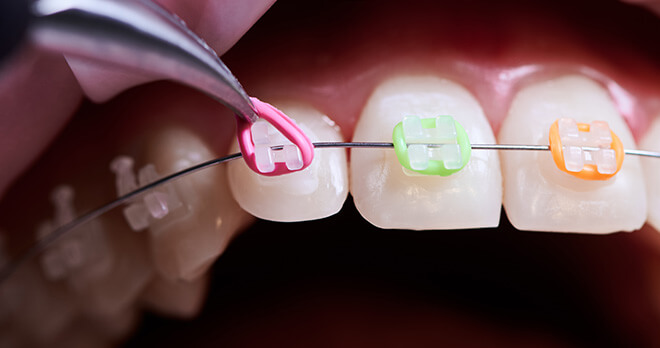What is a dental filling and how can they go wrong?
A blog looking at the different types of fillings and the difficulties a person can face when a filling is completed negligently.
Many of us have had one or two fillings at some point, but not everyone knows what they are or what they’re made of.
There are two standard types of filling; amalgam and composite.
Amalgam fillings
Amalgam restorations, which are often called silver fillings, are made up of a mixture of metals including mercury, silver, tin and copper. Amalgam has been used in dentistry for around 150 years and is an effective filling material. Generally amalgam fillings are used on back teeth, as the fillings are hard wearing and can therefore withstand the pressure placed on back teeth whilst a person chews food. Some may consider that amalgam fillings are unaesthetic when compared to composite fillings, as they are more visible when a person smiles or eats. However, often only amalgam filings are available on the NHS, meaning that they remain a popular choice.
Composite fillings
Composite fillings are resin based restorations which match the colour of the person’s teeth. They are generally more appropriate for small cavities, as composite fillings are not as hard wearing as amalgam. In addition, they are often only available on a private basis, so can prove costly!
Why would I need a filling?
Fillings are usually used to repair teeth after the removal of decay. Alternatively, they can be required to repair fractured and chipped teeth. When a dentist identifies tooth decay, a filling may be the most appropriate treatment in order to prevent further damage to the tooth. The procedure is relatively straightforward, but will most likely require the use of a drill and local anaesthetic to carry out the treatment.
Possible signs of poor dental fillings
It is not easy to determine whether or not you have received a poor dental filling, unless you have been examined by a dental practitioner who may be able to confirm the same.
However, possible signs of poor dental fillings may include:
- unshaped or un-smoothed fillings, that may extend beyond the edge of the tooth creating an “overhang”;
- very large fillings, which can indicate that a crown should have instead been used to restore the tooth;
- food trapping, which is when small pieces of food become trapped around the edge of the filling, or between the neighbouring teeth. This is problematic, as this trapped food can then breakdown and cause tooth decay.
What problems do poor fillings cause?
Failure of a dentist to adequately fill a tooth can lead to on-going tooth pain. Whilst most people may experience some toothache after having a tooth filled, toothache which lasts several weeks may be a sign of a poor dental filling.
If the filling has not been adequately prepared, the mixture may not bond properly to the tooth tissue. This may cause the filling to fall out, which could then allow further decay to form and lead to long lasting toothache and infection. This is called secondary decay and may lead to the need for more complicated and expensive treatment.
Further, if the edges of a filling are not smoothed down or shaped correctly, this too can lead to toothache and have an impact on the neighbouring teeth or gums.
Occasionally, your occlusion (bite) may be altered after undergoing a filling. Whilst this is a recognised complication of the treatment, if the filling has been made “too high” this can cause difficulties when trying to eat and can cause a person pain and discomfort. Similarly if a filling is too large, this can also lead to toothache and make it difficult to adequately clean the tooth. The person will then be at risk of further decay and may require further fillings or alternative treatment.
A large filling can also weaken the tooth and should this filling fail, it may be the case that the structure of the tooth is so damaged that it requires root canal treatment and a crown.
In severe cases, a person may lose their tooth if it has developed further decay and the substandard filling cannot be replaced. In this instance they may have not option, but to opt for an extraction.
Our experience
The Dental Negligence Team see many cases where a person has suffered from poor dental fillings. Recently we acted for a client who was worried that the amalgam in her fillings could cause her cancer. Rather than reassure her that there was an extremely low risk of this occurring, the Defendant replaced all of her amalgam fillings with composite fillings. Her bite was painfully altered as a result and there were long term effects both in terms of future treatment requirements and pain.
If you feel you or a member of your family have suffered from poor dental fillings which has caused you problems, we would advise you seek the assistance of a dental practitioner and consider speaking to a specialist dental negligence solicitor, such as those in the Dental Negligence Team. We will be more than happy to assist and advise you whether you may be successful in bringing a claim of dental negligence.
Got a question?
You can call the team on 0800 923 2080 or message them to understand more about you potential compensation claim for dental negligence. We will get back to you at a time that is convenient to you.
Common claim types
Insights and opinions
View more articles related to Cosmetic dentistry, Crowns and bridges, Dental implants, Dental nerve damage, Extractions, Gum disease, Information, Mouth cancer, Orthodontics, Root canal treatment, Tooth decay and Wisdom teeth










